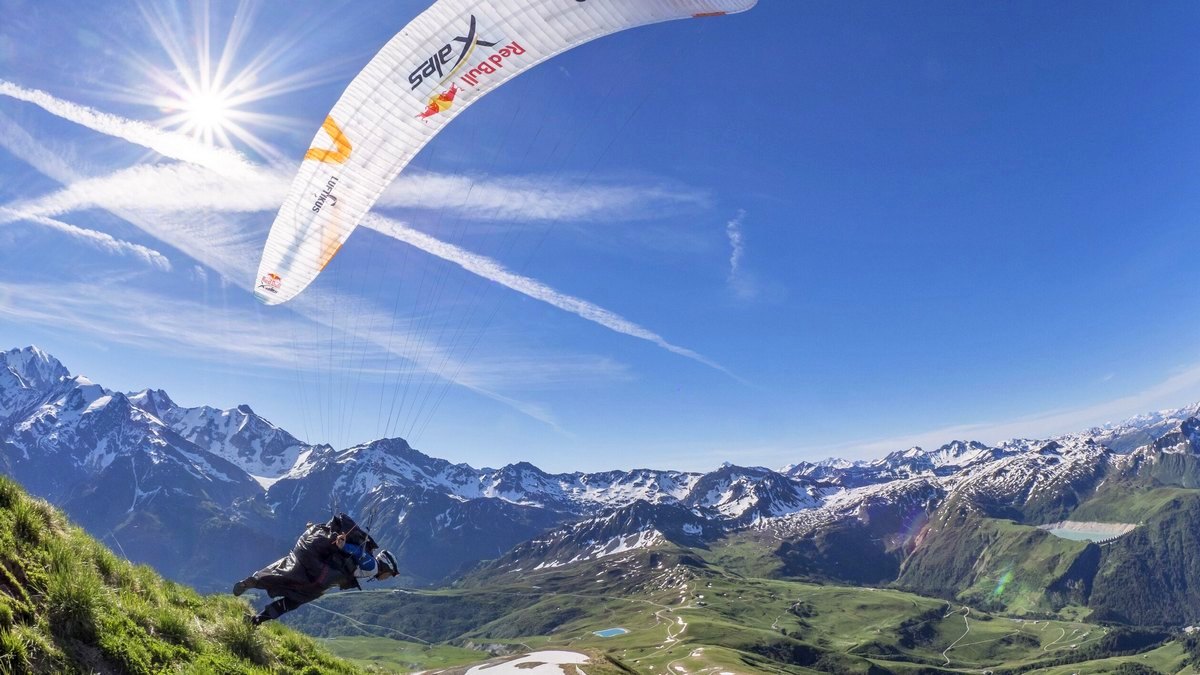
Considering many aspects of the flying site can help to keep you safe.
Imagine all five of your other risk elements are 'red-lining' for a moment. You've gone to South Africa on holiday. The party last night was great, so you’re feeling a bit tender, and someone has lent you a bargain faded EN D glider. It comes with a lightweight strap-harness and some scratched karabiners. You've never done an SIV course (big ears is enough, isn't it?). You don't know much about mountain flying, but you want to give it a try. You forgot your helmet back at your hotel. You don't know what weather was predicted, but someone mentioned funny conditions, or was it Föhny? The wind is strong, gusty, and crossed on launch. Let's fly!
The hair standing up on the back of your neck yet? Good, now look at the new site before you, and all its nasties will jump up at you. No, not Rob and Darron (below), there are more terrifying things on Matroosberg.
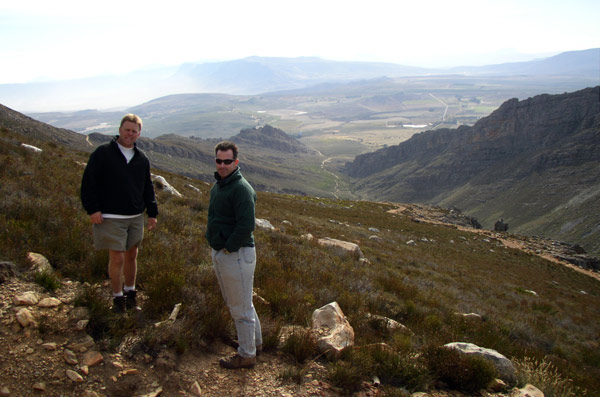
What's the launch area like? Steep, with no space to abort, hazards nearby, turbulent ridges or cliffs below? Okay, apart from some boulders there, the launch area is reasonable, with a gentle slope and space to abort.
But what's the angle of wind to the slope? (More than 45 degrees = red). Is there anything about the terrain that might conceal the true wind conditions? What I see in that site pic is terrain that will only allow for one particular direction of wind (straight up the gravel road) otherwise the ridges will produce rotor. If the wind is crossed, you probably won't know because the gully will direct the wind onto launch. Is the wind expected to change to a risky angle during the day, and might it have changed already?
Is the landing area within easy glide? Consider yourself flying a partly collapsed wing, and being thrown around unpredictably. When things have gone pear-shaped, you have the glide angle of ... well ... a pear. If that puts you in the forest, powerlines, or surf, think again. Apart from scrubby rocky slopelanding, I don't see much safe landing in that photo until you're out of the gully, about 10:1 glide. Into wind, you won't reach it.
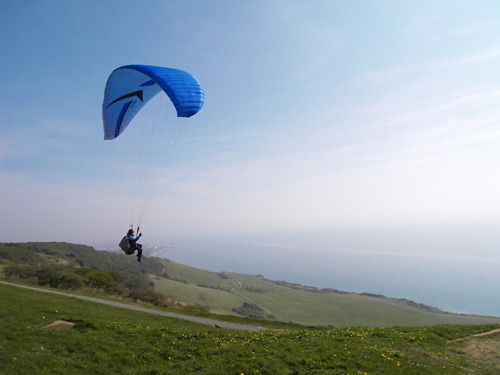
^ In moderate South Easterlies, Beachy Head is brilliant: safe launch, safe landing, smooth contours ... and a view of the sea.
Bringing the discussion back to the south of England, that's why the south side of Beachy Head at high tide is definitely not suitable for low-airtime pilots: the landing is sometimes not within easy glide, or very very restricted. Small landing fields with critical approaches raise the risk. How many alternative landing areas are there? Have you visited the landing to check for hazards? Can you even see the landing?
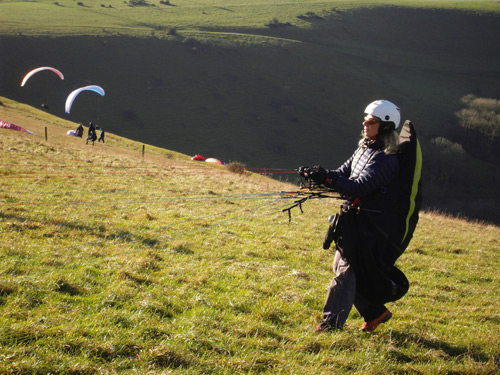
^ The Devils Dyke launch area is very low risk
Then investigate what it looks like over the back. An easy toplanding area or a bottomless pit? Are there any escape routes? A site like Bo Peep scores well here, as it has a smooth wide open easy grassed landscape (providing you land behind the fence). Devil's Dyke (especially near launch) scores poorly: misjudge the wind and you're behind the pub, and whackwollop, into the Dyke itself. But it doesn't hold a candle to the kind of risk at Matroosberg: here's a shot of the site from further south. Hmm, a bit of a drop over the back then.
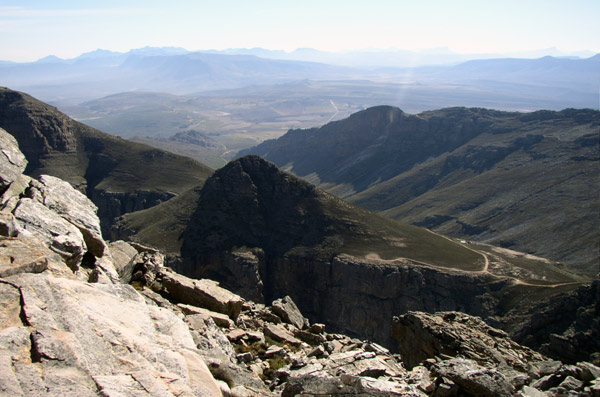
Then think about what the slope is like. Rough rocks or trees increase the risk of turbulence, and limit your emergency landing areas. Folded ridges have more potential for turbulence. The vegetation affects how the slope heats up too. Melting snow on rock produces sharp contrasts in temperature and thus hard-hitting thermals. Grassy slopes are good for smoother airflow. That's why we like the South Downs for safe, smooth soaring conditions and gentle thermals.
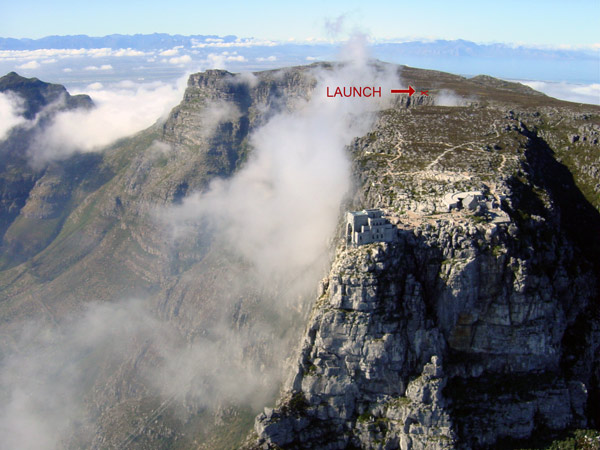
^ Table Mountain, Cape Town: a launch site with no tolerance for mistakes, restricted to experienced pilots.
When flying, where you position yourself affects your risk. A pilot ahead of you flies tight against the slope and boosts up like Rocketman. Should you follow? Well, how experienced is that pilot? It might be only orange risk for him, but red for you.
Position yourself in the safest part of the air where you can still fly, not in the quickest place to get up. This lowers your risk while you are building the necessary experience and ability. If you're uncertain, you should aim to be the pilot furthest away from the slope, out in front where there is space.
If there are no visible wind indicators (lakes, fires, airborne gliders) the site risk is higher, because you can't really tell what's going on.
Another thing to consider is the remoteness of the site (if you go down, how will anyone reach you).
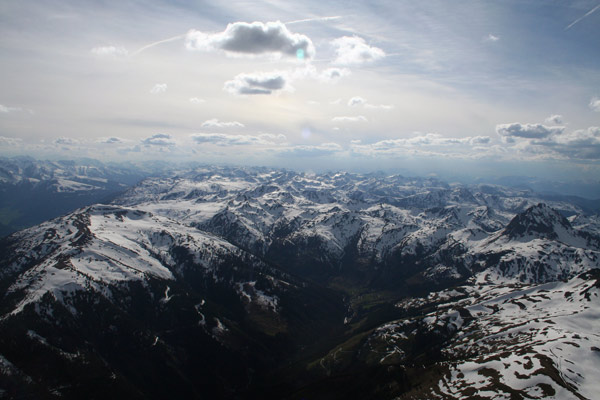
^ The Austrian Alps are certainly spectacular, but you don't want to be here when the wind is strong...
Finally, site traffic is a significant risk in some places, particularly on the popular SHGC sites. The weaker the lift and the lower the inversion layer, the more the traffic will be bunched up on the ridge. On such days, consider coming early or waiting till the lift is stronger so there is more space.
Every site usually has a controlling club, and it's worth reading their sites guide and following the rules. Consider investigating neighbouring clubs to enjoy sites with less traffic. Something like paraglidingmap.com will show possible alternatives (note: its flyability predictions are not very accurate).
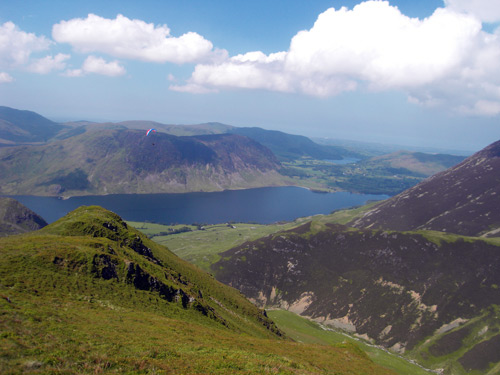
^ XC flying requires everchanging site risk analysis: a tricky spot in the Lake District.
When flying cross-country, you are continuously changing your flying site, which is why it requires constant analysis, and lots of caution. Because of the potential for getting this wrong when starting out, try to get a green light in all the other risk segments first. Swot up with the Pilot Handbook and get your BHPA Pilot rating!
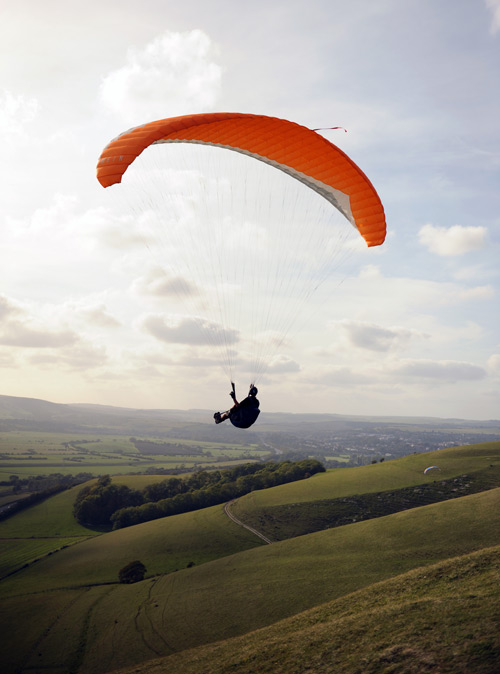
^ Mount Caburn has convoluted slopes, so the site risk increases in crosswind (W).
Next issue we'll look at ability. In the meantime, consider where you can reduce your risk with your choice of flying sites. Remember to ask the most experienced pilot on site for a briefing if you are unfamiliar with the area. They are usually more than happy to help.
Brought to you by Flybubble
Like what we do? The best way to thank and support us is to buy gear from us and recommend us to others. Review our service on Trustpilot and our products on Flybubble Shop. You can also subscribe to Flybubble Patreon. Thank you!

